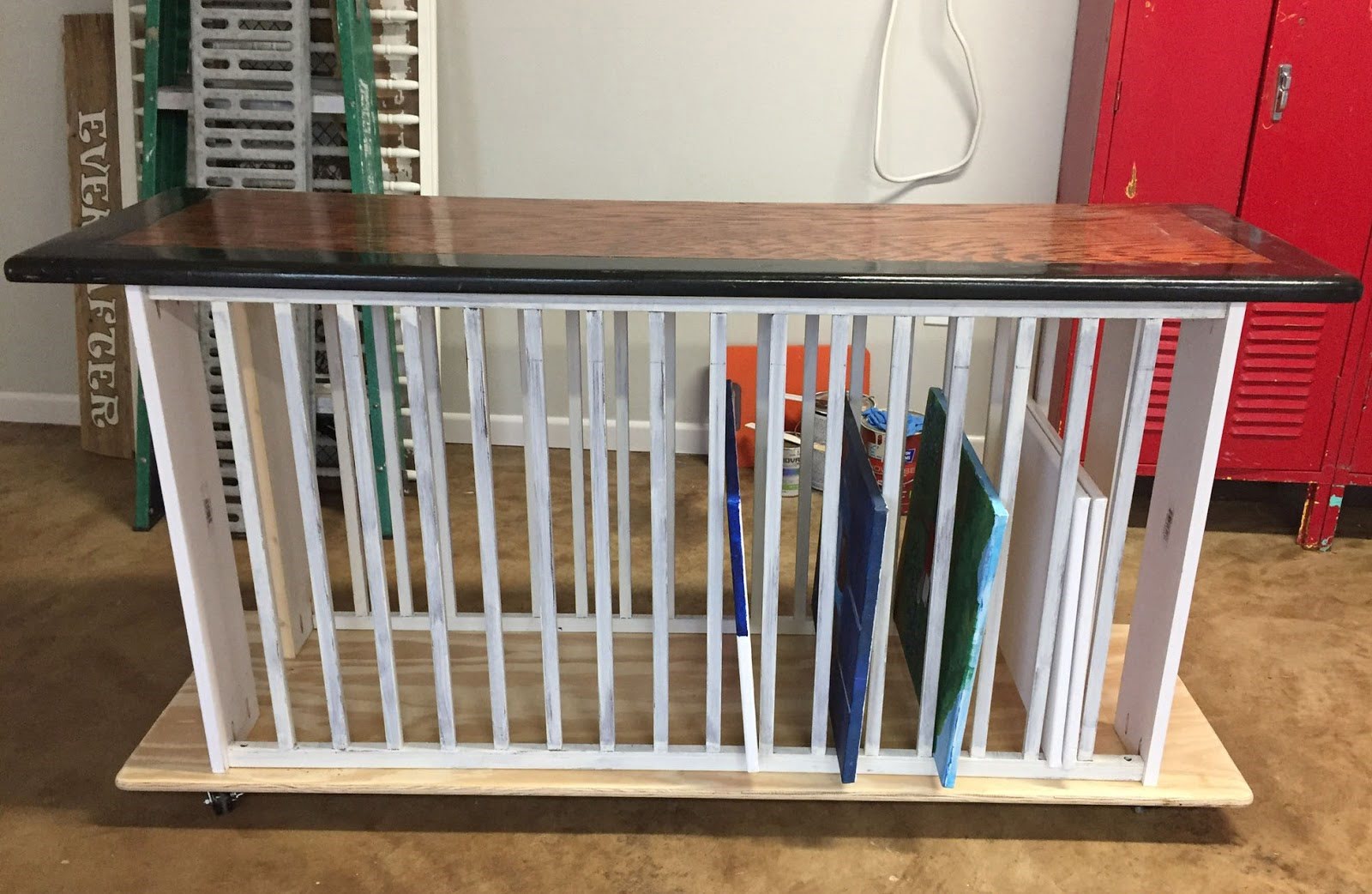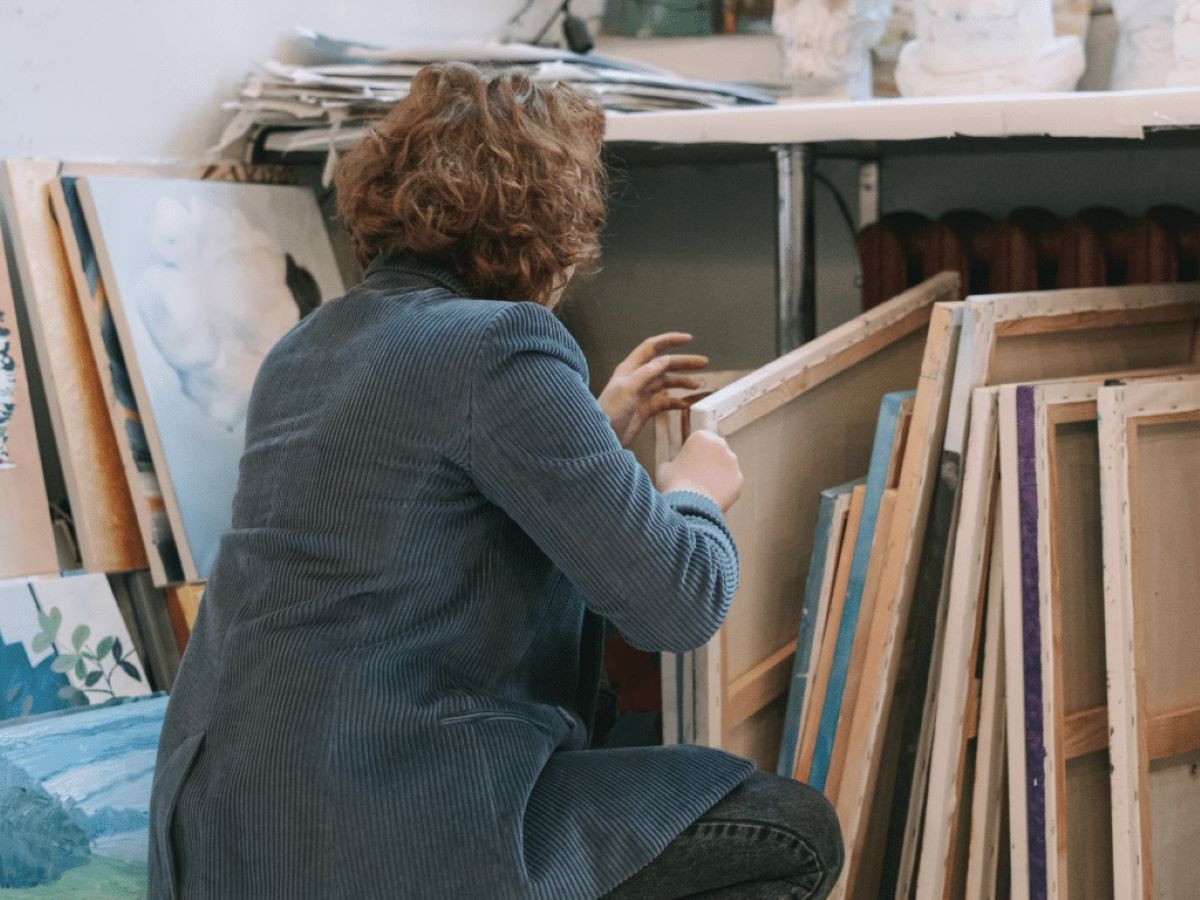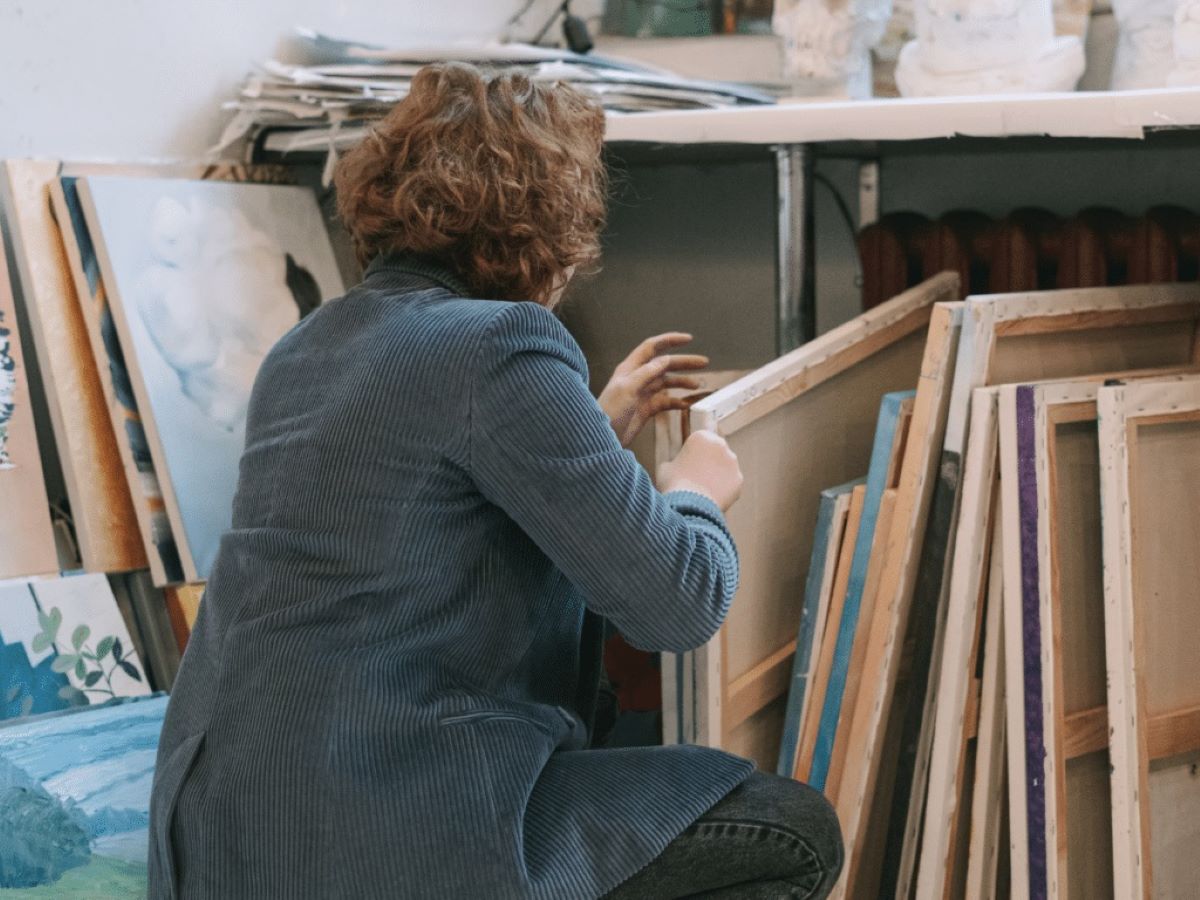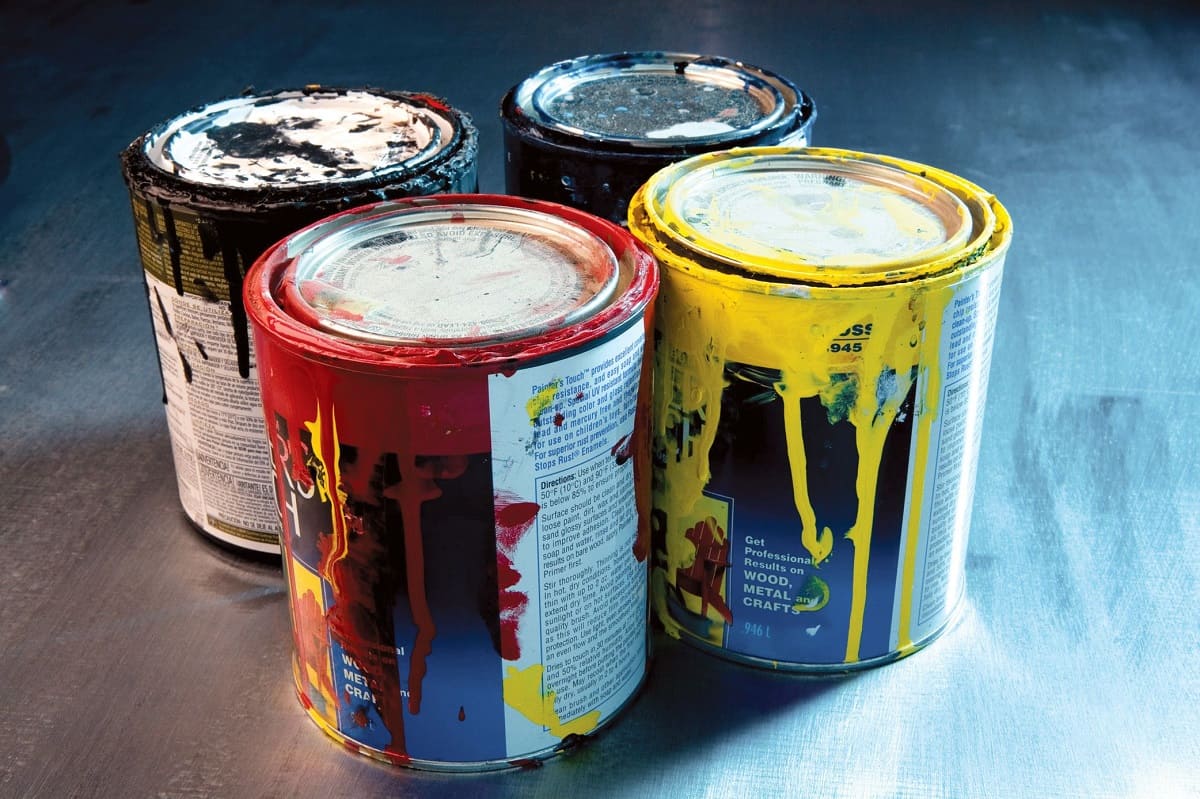

Articles
How To Store Canvas Paintings
Modified: January 5, 2024
Learn the best way to store your canvas paintings to preserve their beauty and prevent damage. Read our articles for expert tips and advice.
(Many of the links in this article redirect to a specific reviewed product. Your purchase of these products through affiliate links helps to generate commission for Storables.com, at no extra cost. Learn more)
Introduction
Welcome to the world of canvas paintings! Whether you are an artist or an art enthusiast, you understand the value and beauty that a canvas painting brings to a space. From the vibrant strokes of color to the intricate details, a canvas painting is a work of art that deserves to be cherished and protected.
When it comes to storing canvas paintings, it is crucial to take proper precautions to ensure their longevity and preservation. Exposure to harsh elements, improper handling, and inadequate storage conditions can lead to irreversible damage to these precious artworks. In this article, we will guide you through the process of storing canvas paintings, from choosing the right space to regular maintenance and cleaning.
So, whether you are looking to store your own canvas paintings or are entrusted with the task of storing valuable artwork, let’s dive into the world of proper canvas painting storage and preservation.
Key Takeaways:
- Proper storage and care are essential for preserving the beauty and longevity of canvas paintings. From choosing the right space to regular maintenance, following these steps ensures your valuable artworks remain protected and pristine for generations to come.
- By incorporating regular maintenance and cleaning into your routine, you can help preserve the condition and beauty of your canvas paintings, ensuring they remain a stunning visual delight for generations to come.
Read more: How To Store Unframed Canvas Paintings
Choosing the Right Space
When it comes to storing canvas paintings, the first step is to choose the right space for their safekeeping. Here are some factors to consider:
- Temperature and Humidity: Optimal temperature and humidity levels are crucial for the preservation of canvas paintings. Avoid storing them in areas prone to extreme temperature fluctuations, such as attics, basements, or garages. Ideally, the temperature should be between 65-75°F (18-24°C) and the relative humidity should be around 45-55%.
- Avoid Direct Sunlight: Sunlight can cause fading and discoloration of canvas paintings. Choose a space away from windows or use UV-filtering window coverings to minimize exposure to direct sunlight.
- Avoid Moisture and Dampness: Moisture and dampness can lead to mold and mildew growth, which can severely damage canvas paintings. Ensure the storage area is dry and well-ventilated, and consider using dehumidifiers or moisture-absorbing products if necessary.
- Security: Canvas paintings are valuable and should be stored in a secure area to prevent theft or damage. Consider installing security measures such as alarms, cameras, or fire-resistant safes.
Once you have chosen the right space for storing your canvas paintings, it is important to take additional steps to prepare the paintings for storage.
Preparing the Canvas
Before storing canvas paintings, it is essential to properly prepare them to ensure their preservation. Follow these steps to prepare your canvas paintings for storage:
- Clean the Surface: Use a soft, lint-free cloth or a brush with soft bristles to gently remove any dust or dirt from the surface of the painting. Avoid using cleaning agents or water, as they can damage the artwork.
- Inspect for Damage: carefully examine the painting for any signs of damage, such as tears, scratches, or flaking paint. If you notice any issues, it is advisable to consult a professional art restorer to address the damage before storing the painting.
- Remove Loose Items: If there are any loose or detachable elements, such as frames, hooks, or accessories, remove them before storage. These items can cause damage to the painting or become damaged themselves if left attached.
- Protective Layers: Consider adding a layer of protection to the surface of the painting. You can use acid-free tissue paper or glassine paper to cover the artwork. This will help prevent dirt, dust, and any potential surface abrasions.
- Document the Artwork: Before storing the canvas painting, it is a good practice to document it for insurance and reference purposes. Take detailed photographs of the artwork, noting any distinguishing features or imperfections.
By taking these preparatory steps, you are ensuring that your canvas paintings are ready for storage in the best possible condition.
Framing the Painting
Framing your canvas painting not only enhances its aesthetic appeal but also provides added protection during storage. Follow these steps to properly frame your painting:
- Select a Suitable Frame: Choose a frame that complements the style and dimensions of your canvas painting. Ensure that the frame is sturdy and durable to provide adequate support.
- Matting: If your canvas painting has a lot of white space around it, consider using a mat to enhance its presentation. The matting also acts as a buffer between the artwork and the glass, preventing any direct contact.
- Use Acid-Free Materials: When framing your canvas painting, it is essential to use acid-free materials to protect the artwork from deterioration caused by acidic substances. Acid-free matting, backing board, and mounting tape are recommended.
- Glazing: Choose the appropriate glazing material for your canvas painting. Museum-quality acrylic or UV-filtering glass is ideal as it provides protection against harmful UV rays and prevents dust and debris from reaching the artwork.
- Secure the Backing: Once the canvas painting is properly framed, ensure that the backing board is securely attached to the frame. This prevents any shifting or movement during storage.
Framing your canvas painting not only adds an elegant touch but also provides an additional layer of protection against environmental factors such as dust, moisture, and UV rays. It is highly recommended to have your canvas painting professionally framed for the best results.
Protecting the Surface
Preserving the surface of your canvas painting is essential for maintaining its integrity and longevity. Here are some tips to protect the surface of your artwork:
- Avoid Touching: Always handle the canvas painting with clean hands or wear cotton gloves to prevent oils, dirt, or moisture from transferring onto the surface. Touching the painting directly can cause smudges or damage the paint layers.
- Keep it Elevated: When storing or displaying your canvas painting, make sure it is placed on a clean and stable surface. Avoid placing it directly on the floor or against walls, as this increases the risk of accidental damage or contact with moisture.
- Maintain a Dust-Free Environment: Dust and dirt particles can settle on the surface of canvas paintings, leading to gradual deterioration. Regularly dust the storage area using a soft brush or a microfiber cloth to minimize the accumulation of dust.
- Avoid Moisture and Humidity: Excessive moisture and humidity can cause mold, mildew, or warping of the canvas. Ensure that the storage area maintains optimal humidity levels and consider using moisture-absorbing products, such as silica gel packets, to prevent moisture-related damage.
- Protect from Pests: Insects and rodents can pose a threat to canvas paintings. Take precautions by inspecting the storage area for signs of infestation and consider using pest control methods or storing the artwork in sealed containers or cabinets.
- Minimize Exposure to Light: Long-term exposure to natural or artificial light can cause fading and discoloration of the artwork. Store the canvas painting in a dark area or cover it with a light-blocking cloth or material to minimize light exposure.
By following these protective measures, you can significantly reduce the risk of damage to the surface of your canvas painting and ensure its long-term preservation.
Store canvas paintings vertically to prevent warping. Use acid-free paper or glassine to protect the surface, and avoid direct sunlight and extreme temperatures.
Read more: How To Store Large Canvas Paintings
Wrapping and Storing the Painting
Properly wrapping and storing your canvas painting is crucial to protect it from external elements and ensure its safekeeping. Here are the steps to follow:
- Remove the Painting from the Frame: If your canvas painting is framed, carefully remove it from the frame before wrapping. This will reduce the risk of damage to the frame or the artwork during storage.
- Wrap with Acid-Free Paper or Cloth: Begin by wrapping the canvas loosely with acid-free tissue paper or cloth. This additional layer provides a barrier against dust and protects the painting from potential scratches or abrasions.
- Padding and Cushioning: Place additional padding around the wrapped canvas to provide cushioning during storage. You can use foam boards, bubble wrap, or archival cardboard to prevent any pressure or impact on the painting.
- Choose the Right Storage Container: Select a storage container that is sturdy, well-sealed, and offers protection against moisture and pests. Acid-free cardboard boxes, hard plastic containers, or custom-made art storage crates are recommended options.
- Proper Placement: When placing the wrapped painting in the storage container, make sure it is positioned upright or laying flat to avoid any bending or warping of the canvas. Avoid overcrowding the container to prevent pressure on the painting.
- Labeling: Clearly label the storage container with the name of the artwork, date, and any additional information to easily locate and identify the painting in the future.
Store the wrapped and cushioned canvas painting in a cool, dry, and secure location. Avoid storing it in areas prone to temperature fluctuations, high humidity, or direct sunlight. Regularly check the painting to ensure it remains in good condition and to address any storage-related issues promptly.
Remember, proper wrapping and storage are essential for keeping your canvas painting safe and well-preserved for years to come.
Proper Handling and Transport
When it comes to handling and transporting canvas paintings, extra care and caution are necessary to prevent any damage. Follow these guidelines to ensure the safe handling and transportation of your precious artwork:
- Wear Protective Gloves: Always wear clean, lint-free gloves or use cotton gloves when handling canvas paintings. This helps to prevent any oils, dirt, or fingerprints from transferring onto the surface.
- Support from the Back: When picking up a canvas painting, support it from the back of the frame or stretcher bars. Avoid touching the actual painted surface as it is delicate and susceptible to damage.
- Use Protective Wrapping: If you need to transport the artwork, wrap it securely in acid-free paper or cloth, as mentioned earlier. This will provide an additional layer of protection against accidental scratches or bumps.
- Secure in a Sturdy Container: Place the wrapped painting in a sturdy and well-padded container. Ensure that it fits snugly and does not have any room for movement. Use additional cushioning materials, such as bubble wrap or foam, to prevent shifting during transport.
- Avoid Extreme Temperatures: During transportation, make sure to avoid exposing the artwork to extreme temperatures or rapid temperature changes. These can cause damage to the canvas and paint layers.
- Handle with Care: Be mindful of how you carry the container and avoid placing heavy objects on top of it. Treat the artwork delicately and avoid any rough handling or sudden movements that could cause damage.
- Consult Professionals for Large Artwork: If you have larger or more valuable canvas paintings that require transportation, it is advisable to consult professional art handlers or art transport companies. They have the expertise and specialized equipment to safely handle and transport delicate artworks.
By following these guidelines, you can minimize the risk of damage during both handling and transportation, ensuring that your canvas paintings arrive at their destination in pristine condition.
Monitoring the Storage Environment
Ensuring that the storage environment for your canvas paintings remains optimal is essential for their long-term preservation. Regular monitoring will help you identify and address any issues that can potentially harm the artwork. Here are some key aspects to consider:
- Temperature and Humidity: Use a reliable thermometer and hygrometer to monitor the temperature and humidity levels in the storage area. Maintain a consistent temperature between 65-75°F (18-24°C) and a relative humidity level between 45-55% for ideal preservation.
- Light Levels: Keep the storage area as dark as possible to minimize the exposure to light. If necessary, consider using light-blocking curtains or shades to prevent any direct sunlight from reaching the artworks.
- Pest Control: Regularly inspect the storage area for signs of pests, such as insects or rodents. Implement appropriate pest control measures if needed, including traps or professional extermination services, to protect the artworks from damage.
- Security Measures: Ensure that the storage area is secure from unauthorized access or potential theft. Consider installing alarms, surveillance cameras, or other security systems to protect your valuable artworks.
- Regular Inspections: Periodically inspect the stored canvas paintings to check for any signs of damage, mold, or pests. Address any issues promptly to prevent further deterioration.
- Climate Control Systems: If necessary, invest in a climate control system for the storage area to help regulate temperature and humidity levels. Consult with professionals to determine the appropriate system for your specific needs.
- Record Keeping: Maintain accurate records of the storage conditions, including temperature and humidity readings, pest control measures, and any changes or incidents that may affect the artworks.
By consistently monitoring the storage environment and promptly addressing any issues that arise, you can ensure that your canvas paintings are preserved in the best possible condition for years to come.
Regular Maintenance and Cleaning
Regular maintenance and cleaning are essential to keep your canvas paintings in optimal condition and prevent the accumulation of dirt, dust, and other pollutants. Here are some guidelines to follow:
- Gentle Dusting: Use a soft, clean brush or a microfiber cloth to gently dust the surface of the canvas painting regularly. Start from the top and work your way down to prevent any dust from falling onto already cleaned areas.
- Avoid Chemical Cleaners: Avoid using any harsh chemical cleaners or solvents on the painting’s surface, as they can cause damage to the paint layers. Stick to gentle cleaning methods.
- Spot Cleaning: If you notice any localized stains or spots on the canvas, you can lightly dab a clean, soft cloth dampened with distilled water onto the affected area. Pat dry gently to remove the stain without causing damage.
- Avoid Excessive Handling: Minimize the amount of direct contact with the artwork to prevent the transfer of oils or dirt from your hands onto the surface. Handle the painting as little as possible during cleaning and maintenance.
- Professional Restoration: If you notice significant damage or deterioration on your canvas painting, it is best to consult a professional art restorer. They can assess the condition and properly restore the artwork, ensuring its preservation for years to come.
- Proper Display: When displaying your canvas paintings, ensure they are away from direct sunlight, heat sources, or high humidity areas. These environmental conditions can accelerate the deterioration process.
- Regularly Rotate Artworks: If you have multiple canvas paintings, consider rotating them periodically to prevent prolonged exposure to light and environmental factors. This helps to distribute any potential damage more evenly.
- Document Changes: Keep detailed records of any changes or issues you notice over time, such as discoloration, fading, or damage. This information can be valuable for future reference, restoration, or insurance purposes.
By incorporating regular maintenance and cleaning into your routine, you can help preserve the condition and beauty of your canvas paintings, ensuring that they remain a stunning visual delight for generations to come.
Read more: How To Store Canvas Paintings At Home
Conclusion
Proper storage and care are crucial for preserving the beauty and longevity of canvas paintings. By following the steps outlined in this article, you can ensure that your valuable artworks are protected from environmental factors, accidents, and deterioration.
Start by choosing the right storage space with optimal temperature, humidity levels, and protection from sunlight. Prepare the canvas paintings by cleaning the surface, inspecting for damage, and removing any loose items. Consider framing the paintings to provide added support and protection.
Protecting the surface of the artworks involves avoiding direct contact, keeping the paintings elevated, maintaining a dust-free environment, and safeguarding them from moisture, pests, and excessive light.
When wrapping and storing the paintings, use acid-free paper or cloth, provide proper cushioning, and place them in sturdy, well-sealed containers. Monitor the storage environment regularly for temperature, humidity, and security. Perform routine maintenance and cleaning, using gentle methods and avoiding harsh chemicals.
Remember to handle and transport the paintings with care, wearing protective gloves, and using appropriate wrapping and padding. Consult professionals for larger or valuable artworks that require special handling and transportation.
By following these guidelines, you can ensure that your canvas paintings remain in pristine condition for years to come. Regularly inspect and maintain the artworks, documenting any changes, and addressing issues promptly.
Preserving the beauty and integrity of canvas paintings is not only a responsibility but also an opportunity to cherish and enjoy these exceptional works of art. With proper care, your canvas paintings will continue to inspire and bring joy to future generations.
Frequently Asked Questions about How To Store Canvas Paintings
Was this page helpful?
At Storables.com, we guarantee accurate and reliable information. Our content, validated by Expert Board Contributors, is crafted following stringent Editorial Policies. We're committed to providing you with well-researched, expert-backed insights for all your informational needs.














0 thoughts on “How To Store Canvas Paintings”